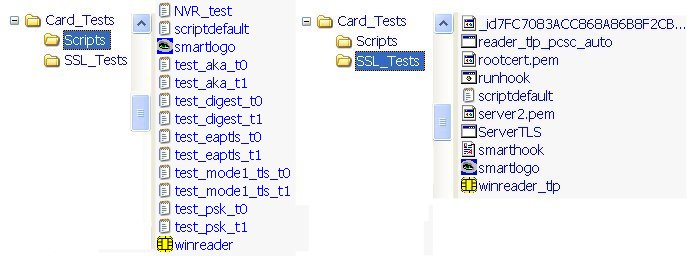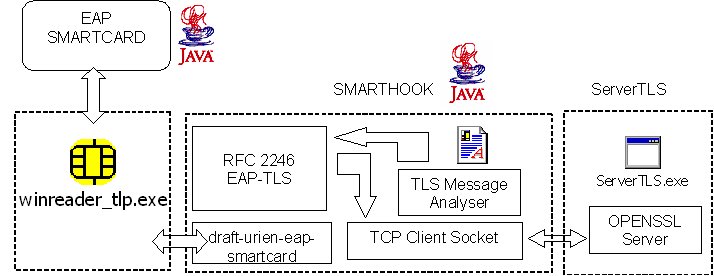1-Testing EAP smartcards in Windows platforms
Download the zip file (tests_eap_cards.zip)
and unzip it in a repertory (Cards_Tests for example)

2-Basic tests (Scripts repertory)
a- Start winreader.exe
 .
.
If you want to monitor performances (e.g. timing response), start
a console by clicking on New/Console
To restore the default EAP card content, go to /Script/Exec and load
the NVR_test.txt file
In winreader go in Script/Exec and select one of the four following
scripts
- test_digest_t0.txt or test_digest_t1.txt, tests for
EAP-MD5 and EAP-SHA1 methods
- test_eap_tls_t0.txt or test_eap_tls_t1.txt, tests for
EAP-TLS smartcards
- test_mode1_tls_t0.txt or test_mode1_tls_t1.txt, tests
for EAP-TLS smartcards, mode one facilities
- test _psk_t0.txt or test _psk_t1.txt, tests for
EAP-PSK smartcards
- test_aka_t0.txt or test_aka_t1.txt,
tests for EAP-AKA smartcards
NB. That are two kind of serial link
protocols for smartcards. They are associated to different script files.
- t0 indicates the T=0 protocol. SIM cards, and most smartcards
use this protocol.
- t1 indicates the T=1 protocol, which is used by JCOP javacards for
example.
3-EAP-TLS tests (SSL_Tests repertory)

a- Start winreader_tlp.exe (windows version) or reader_tlp_pcsc_auto.exe
(console version). These smartcard readers, open a TCP server on the
port 8080, in order to communicate with JAVA applications.
b- Start the TLS server ServerTLS.exe,
and enter the password pascal
c- Start the software bridge (smarthook.jar)
with the runhook.bat command.
It may be necessary to modify the content of runhook.bat
which is used to start
the java virtual machine.

 .
. 